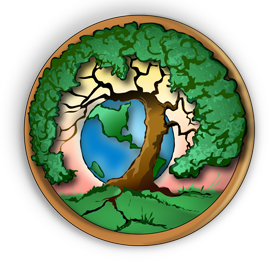Networking Pre- and Post-Internet - Plus a Review: Growing Food in a Hotter, Drier Land
I signed up to Linked-In a couple weeks ago, since I was getting so many invitations to join from people I love and respect. It is quickly mushrooming and I have about 200 connections now. My Facebook pages have many more than that, but I have not capitalized on the networking that it offers either. Anyone have advice for me on how to use Linked-In?
I used to be way better at networking. I built up a network of over 15,000 people and organizations even before the internet existed. Maintained largely through correspondence in the mail. My postage bill reached $4,000 one year in the 1980s! I maintained a large international correspondence in the 1990s when I ran my Travelers’ Earth Repair Network. This was epitomized perhaps in the publication of my Third World Resource Guide in 1993 which listed 425 organizations, 95 periodicals and over 275 other useful references. It was designed to aid people working for earth restoration and social justice in Asia, Africa and Latin America (today I would title it the Two-Thirds World Resource Guide). We printed 3,000 copies and sent them all around the world. I still have some copies left and will send them for $5 each postpaid.
I never moved fully into the internet age. Although I do use it, I am not very proficient at it. My email list to which I send periodic email newsletters is now built up to 4,500 contacts. Currently most of my networking is on both sides of the Pacific Northwest (Maritime and Interior) and with my recent move to Montana I am expanding in Montana the most.
Perhaps someday, a computer-, internet- and database-savvy person will join forces with me to make my network grow and be more effective.
At the moment, most of my networking is based in permaculture circles, herbalism and nature-spirit communication (aka fairies). Sustainable agriculture, restoration forestry, wildcrafting and ethnobotany are still minor components,
I wrote in my Linked-In description that I am a One-man Band. This is true to a certain extent because I am the only person focused full time on Friends of the Trees activities, but I do work in cooperation with hundreds of people in any given year for certain projects. Such as putting on permaculture convergences, permaculture design courses, fairy congresses and other local and regional events. Social cooperation and networking have been a big part of my life since I started organizing/networking in 1972.
Farming and growing plants also remains a big part of my life. This is my first year of growing in Montana and I haven’t found any piece of ground big enough for my ambitions so I have gardens in 5 locations this year. Maybe ¼ acre in total. Most likely I will double that next year, especially if some help comes along. Mostly I am putting in medicinal food forests which eclectic mixes of annuals (vegetables) perennial herbs, berries, shrubs and trees. Given the unsettled world situation I am uneasy if I do not have big food gardens in every year and given the changing climates I am particularly big on hardy perennials that can produce well given the vagaries of weather.
Gary Paul Nabhan really makes this point in his new book “Growing Food in a Hotter, Drier Land: Lessons from Desert Farmers on Adapting to Climate Uncertainty”. Chelsea Green Press, 2013. I had pre-ordered the book, because I highly respect Nabhan’s writings and it just came in a couple days ago. I highly recommend this book, especially to people who live in arid or semi-arid climates anywhere in the world. Nabhan’s key premise is that climate changes are going to negatively affect food production around the world. A point I have been making for several decades myself, but Nabhan will reach a great many more people than I can. Some people have been promoting the idea that elevated CO2 levels in the atmosphere will lead to higher crop yields. While plants do like higher CO2 in the air, the changes in weather extremes (droughts, floods, changing of weather patterns, etc) will reduce crop production in many ways and in greater measure. The big 2012 drought affecting the US and Mexico is a recent example. 70% of all counties in the US were declared disaster areas in 2012! Unprecedented in history and perhaps becoming the new normal.
Nabhan spends part of the book making this point clear, but more importantly he gives us techniques and strategies to adapt to these changing climates with a focus on food production in droughts and lowered rainfall. This information is very valuable for humanity at this point.
Nabhan mentions permaculture in his book as a valuable source of information and is clearly familiar with permaculture. It is noteworthy to me that all (or almost all) of the growing techniques that he mentions are taught in permaculture design courses, such as water harvesting, rain gardens, quanats, ola irrigation, perennial guilds, nurse plants, biochar, etc.
Nabhan’s book made me run to my bookshelf to review my “Reference Guide to Sustainable Land Use in Arid and Semi-Arid Lands” which I wrote in 1988 and published in my 1988 International Green Front Report. It is a reference guide to techniques, books, organizations and periodicals on the subject and is still very germane today. I will endeavor to get a pdf of my guide onto my websites. I have about 100 copies left of my 8,000 printing and am willing to send copies to people for $15 postpaid. It is 196 pages and includes some outdated and some still useful sections such as a plant species list for the Interior Pacific Northwest and much else.
Growing food in a changing climate is one of the most important topics in the world today and permaculture publications are one of the best sources of this information available. I will review more pc publications in future blogs.
Horticordially yours,
Michael Pilarski





















